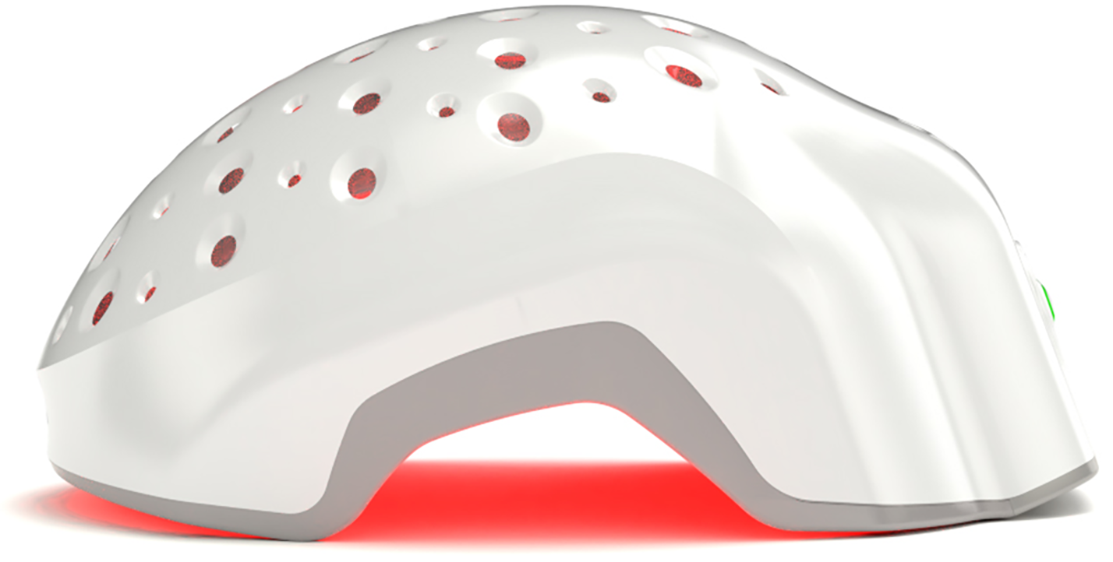Hair transplants are everywhere. Celebrities swear by them, influencers flaunt them, and clinics promote them like they’re foolproof. But behind the slick marketing and perfectly angled after-photos lies a not-so-fun truth: not all transplants stick the landing. In fact, failure is more common than most people think—and often for reasons that have nothing to do with whether hair transplants work in theory.
Here’s the thing: hair transplants can work—when they’re done right, on the right candidate, and followed up with the right care. The success rate of hair transplant surgery is generally high. But "generally" doesn't mean universally. From botched procedures to medical issues to wild expectations that even the best surgeon couldn’t meet, things can—and do—go sideways.
You won't find much of this in a clinic brochure. The fine print rarely gets airtime. And if you've been burned by a failed hair transplant or you’re nervously Googling whether your investment is about to fall out—literally—you're not alone. Hair transplant gone wrong is a real concern. With real reasons behind it.
In this blog, you’ll get the breakdown of why transplants fail, what the actual success rate looks like, and what to do when results fall short.
Understanding Hair Transplants
Hair transplants are surgical procedures where hair follicles are relocated from thicker, genetically stable areas of the scalp to thinning or balding zones. It sounds simple enough—but don’t let the elevator pitch fool you. Success hinges on surgical skill, the patient’s health, and what happens after you leave the clinic. The two primary methods used are FUT (Follicular Unit Transplantation) and FUE (Follicular Unit Extraction). Each has its pros, quirks, and ideal candidates.
FUT (Follicular Unit Transplantation)
FUT involves removing a thin strip of scalp—usually from the back of the head—and dissecting it into grafts for implantation. It's generally recommended for those who require a high volume of grafts and don’t mind a linear scar hidden under longer hair. It’s like the bulk transfer method. It’s more invasive than FUE but also more efficient in the right hands. The ideal candidate has good scalp elasticity, dense donor hair, and isn't planning on a buzz cut anytime soon.
FUE (Follicular Unit Extraction)
FUE extracts individual follicles using tiny circular incisions. This method avoids a linear scar and appeals to people who prefer shorter hairstyles. However, it’s time-intensive and demands technical precision. Poor technique in FUE can lead to overharvesting and patchy donor zones. It’s best suited for patients with decent donor density and realistic expectations. If your idea of recovery doesn’t include stitches, FUE might be more your speed.
What Is the Success Rate of Hair Transplants?
When done by a qualified surgeon under ideal conditions, the hair transplant success rate can range from 85% to 95%. Success isn't just about how many hairs survive—it also includes how natural the results look, how evenly they grow, and how long they last.
A successful hair transplant requires more than clean surgical technique. Factors like overall health, hormonal balance, scalp hygiene, and adherence to aftercare instructions all play a role. The hair transplant results timeline spans 12 to 18 months, and yes—there’s an awkward “shedding phase” where transplanted hairs fall out before regrowing. If you’re tracking the progress at three months and panicking, relax. You’re probably right on schedule.
Why Do Hair Transplants Fail?
Transplants fail for one of two reasons: the procedure itself was flawed, or something post-op sabotaged the results. Either way, it’s not just unlucky—it’s often avoidable.
1. Poor Surgical Technique
Bad hair transplants usually start with bad planning. If the surgeon places grafts at unnatural angles, damages them during extraction, or mishandles them before implantation, those follicles are dead on arrival. A skilled surgeon isn’t just planting hair—they’re sculpting a new hairline. And no, not every clinic prioritizes artistry over speed.
2. Poor Post-Op Care
Picking your scalp like it’s a lottery ticket, skipping antibiotics, or sweating through workouts too soon? That’s asking for infection and graft rejection. The early stages of healing are fragile, and messing with your scalp—physically or chemically—can unravel everything. Follow post-op instructions like your hair depends on it. Because it really does.
3. Low Quality of Donor Hair
Hair from thinning or miniaturized donor areas won’t magically grow thicker in the recipient zone. Transplanting weak follicles is like building a skyscraper on sand—it might look okay at first, but don’t count on long-term stability. Clinics that overharvest also risk ruining the donor site, which leaves patients stuck with less hair and fewer options.
4. Underlying Medical Conditions
Hair transplant failure can occur even when the surgery goes perfectly—especially if the patient has unaddressed health issues. Autoimmune conditions, thyroid disorders, and chronic inflammation can all impair follicle survival. Androgenic alopecia (genetic hair loss) doesn’t stop just because you got a transplant. Without ongoing treatment, it can continue to thin out native (non-transplanted) hair.
5. Unrealistic Expectations and Miscommunication
No surgeon can defy physics. If your donor area is sparse, your hairline won't look like it did at 18. A mismatch between expectation and reality leads many patients to label a technically successful procedure as a failed hair transplant. Clear, honest pre-surgery consultations are critical—but sadly, not universal.
How to Increase the Success Rate of Your Hair Transplant?
Yes, there are ways to boost your odds. Here’s what actually helps:
- Choose a surgeon with board certification and verified hair transplant reviews
- Stick to aftercare instructions like a gospel
- Don’t touch your scalp (seriously, hands off)
- Skip alcohol, smoking, and sun for at least a few weeks
- Get bloodwork done to rule out underlying issues
Are There Alternatives If Hair Transplant Fails?
If your transplant tanked or you’re not even a candidate, don’t panic. There are solid hair transplant alternatives that don’t involve scalpels.
PRP Therapy
Platelet-Rich Plasma (PRP) therapy uses growth factors from your own blood to stimulate hair growth. It works best for mild to moderate thinning—not total baldness—and is often used as a supplement to other treatments.
Laser Phototherapy/Low-level Light Therapy
Laser Phototherapy (LPT) or Low-level Light Therapy (LLLT) uses safe, cool lasers to boost circulation and trigger dormant follicles back into activity. Unlike surgery, LPT/LLLT is non-invasive, painless, and requires no downtime. It's especially effective for maintaining post-transplant results or as a standalone for early-stage loss.
Devices like FDA-cleared helmets provide full-scalp coverage with controlled laser intensity. Studies have shown that LPT can significantly increase hair density over time with consistent use. It won’t regrow a full mane overnight, but it’s a proven, maintenance-friendly option with virtually zero hair transplant side effects. It’s also commonly used before and after hair transplant surgery to help prepare the scalp, improve graft survival, and support post-surgical regrowth—making it a smart companion to maximize overall results.
Scalp Micropigmentation
This non-surgical technique tattoos pigment dots on the scalp to mimic hair follicles. It's a good visual fix for severe loss and works particularly well for shaved styles. It won’t give you hair, but it will give you the illusion of density.
Second Transplant If Suitable
Sometimes, a second chance works. If you’ve still got a healthy donor area and the first attempt was more error than anatomy, another transplant might be viable—just not right away. Surgeons usually recommend waiting at least 12 months between procedures.
Hair Transplant and the LPT Play Well Together
Even if a patient is determined to go through with a hair transplant, there are strong reasons to also use a Laser Phototherapy (LPT) device. A transplant involves creating thousands of tiny punctures in the scalp—an unavoidable surgical assault. While necessary, this process can shock existing hairs, stress the surrounding scalp, and put transplanted follicles at risk. Using LPT for several weeks before surgery helps boost scalp health and prepare the skin for healing.
Most hair transplant candidates are already dealing with advanced androgenetic alopecia. Follicles are often miniaturized, sebum production is unstable, and scalp inflammation is common. Applying LPT before surgery can help reverse these issues by improving circulation, stabilizing follicles, and reducing inflammatory factors that otherwise compromise healing.
During and after surgery, the benefits continue. LPT increases mitochondrial activity in cells, reduces swelling, and minimizes distress in the scalp tissue. This not only supports healing but also helps ensure that transplanted grafts survive the procedure. Studies and clinical experience show that LPT reduces post-surgical swelling, speeds wound repair, and protects both transplanted and neighboring hairs from trauma-related fallout.
Timing matters. Patients are typically advised to begin LPT within about 48 hours after bandages are removed. Early use reduces inflammation, supports angiogenesis (the process where new blood vessels form to reconnect grafts), and lowers the chance of graft rejection.
LPT is like a supportive teammate. It gives relocated hairs a better chance to survive, while also preserving existing hairs in the surrounding scalp. It reduces redness, supports faster scarring resolution, and improves long-term density outcomes. In short: hair transplants and LPT aren’t competitors—they’re complementary. Used together, they help deliver fuller, more reliable, and healthier results.
Conclusion
So, do hair transplants work?
Yes—but only under the right conditions, with the right expectations, and the right follow-through. The hair transplant cost isn’t just financial—it’s time, healing, and habit overhaul. Understanding why transplants fail puts the power back in your hands, whether you're planning your first procedure or recovering from a hair transplant gone wrong. The hair you want might still be possible. But it’s not guaranteed—and that’s exactly why this information matters.






















